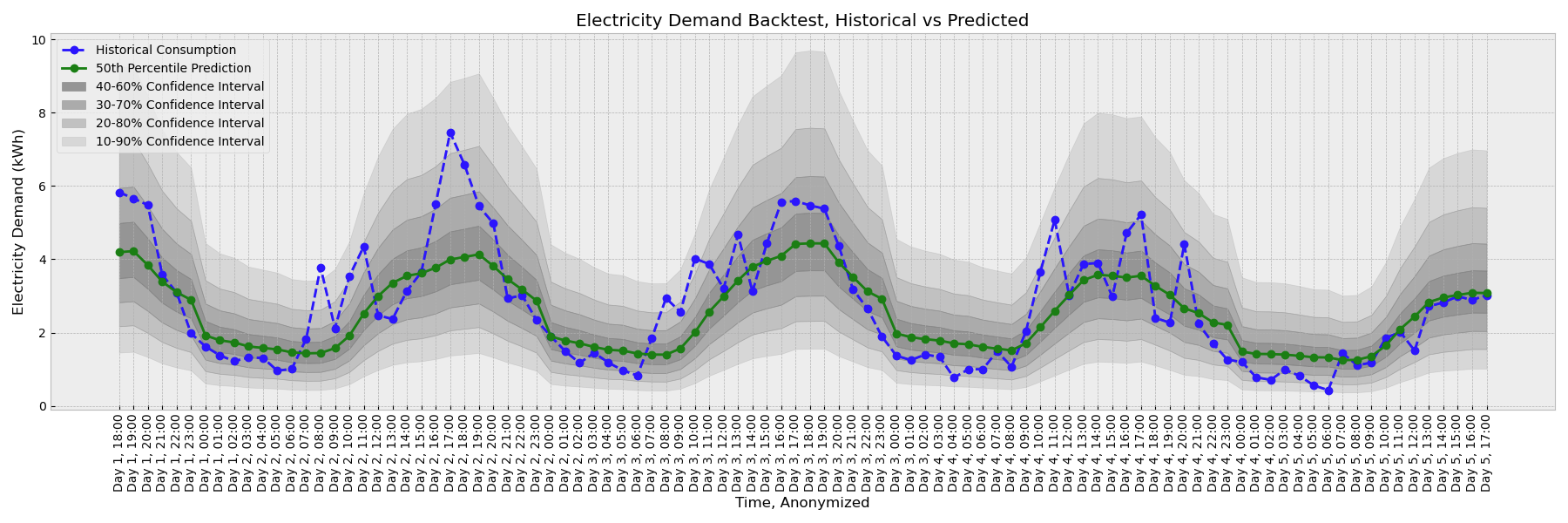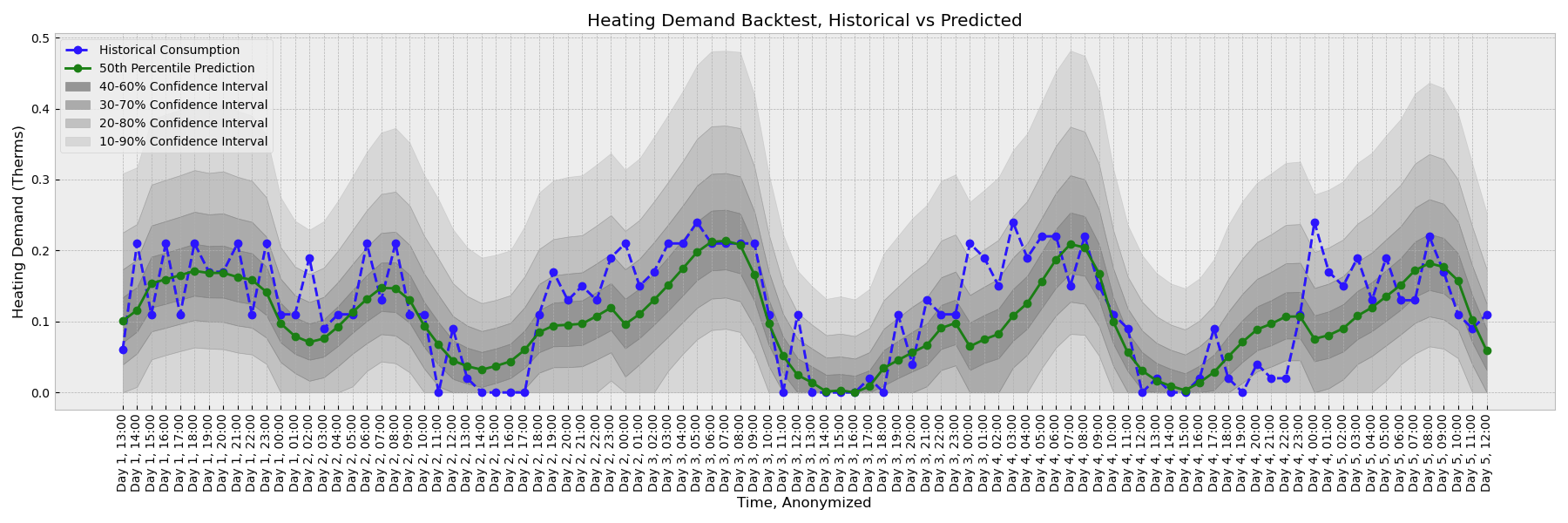
Comprehensive demand and grid stress forecasting

State-of-the-art electricity and heating demand forecasts


Hourly forecasts for every U.S. building
The Challenge
U.S. utilities face unprecedented uncertainty as electricity demand surges—driven by heating electrification, EV adoption, climate change, and data center expansion.
The U.S. power grid is undergoing one of the most profound transformations in its history. As heating systems electrify, millions of EVs plug in, climate volatility intensifies, and hyperscale data centers proliferate, utilities are being asked to manage rapid, structural shifts in demand.
Critically, this growth is not just large - it’s uncertain. The pace of adoption, geographic clustering, and load profiles of new technologies are highly variable, and legacy planning tools fail to capture this complexity. Today’s forecasts rely on outdated building archetypes, coarse spatial resolution, and deterministic assumptions—leaving planners without the precision they need to confidently navigate this high-stakes transition.
In this high-stakes context, better demand intelligence is essential. Without accurate, building-level forecasting, infrastructure could be overbuilt in some places and underbuilt in others, driving up rates, undermining reliability, and delaying decarbonization. A new era of grid planning demands a new class of forecasting tools.
Our Approach
Probabilistic, hourly, building-level demand forecasts—built to scale across regions, data types, and time horizons.
Our forecasting platform was born from over eight years of PhD and postdoctoral research at MIT. At its core is a novel machine learning architecture that integrates remote sensing, weather, socioeconomic, and a wide range of utility data sources—including smart meters, monthly billing records, and even spatially aggregated consumption statistics.
This flexibility allows us to train high-resolution models using whatever data is available, whether granular or coarse, private or public. As a result, we can scale rapidly across new geographies, forecast further into the future, and deliver greater accuracy—often without requiring much or any sensitive data from our partners.
Our models learn directly from real-world behavior, not static assumptions. By generating granular, probabilistic forecasts—with rigorous uncertainty quantification—we give utilities, regulators, and energy market actors the insights they need to plan boldly and act confidently.
Our Philosophy
Grid decarbonization demands data that’s actionable, transparent, and built for decisions that can’t be redone.
Energy infrastructure decisions today will shape emissions, equity, and economic outcomes for decades. That’s why we believe demand forecasting must be accurate, explainable, reproducible, robust. Our platform incorporates state-of-the-art geospatial machine learning techniques designed from the start to support real-world planning.
We prioritize traceability and interpretability at every step. Every forecast includes documented assumptions, metadata, and sensitivity analysis, allowing decision-makers to understand not just what the model predicts - but why. By embedding uncertainty quantification and scenario variation directly into our forecasts, we enable planners to stress-test infrastructure pathways and build for a future that is not only low-carbon, but resilient to change.
This approach ensures that public funds, private capital, and regulatory attention are directed with confidence—avoiding stranded assets, ratepayer risk, and planning blind spots.
Our Stakeholders
We serve utilities, energy consultants, and the public.
Forecasting Grid Stress
Identify when and where grid capacity will be exceeded due to heat pump adoption, EV load, or extreme weather. Enable proactive infrastructure upgrades and load management strategies.
Investment Justification
Our forecasts enable utilities to make evidence-based cases for capital investments, rate changes, and resource adequacy planning - backed by probabilistic, building-level data.
Equity & Electrification
Disaggregate demand forecasts to expose inequities in heat pump adoption, energy burden, and DER deployment. Target incentives where they’ll have the greatest social and climate impact.
Scenario Planning
Run demand projections under different climate futures, policy scenarios, and electrification rates. Understand how long-term grid needs evolve under decarbonization pathways.
Modernizing Planning Tools
Our API integrates with existing utility workflows, replacing or augmenting tools like ResStock with validated, accurate predictions tailored to each service area.

